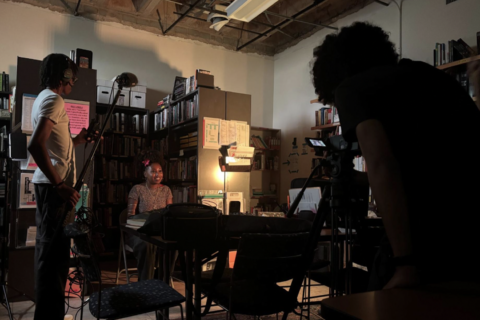There’s a new push to investigate Fort Totten Park in D.C. for the possible link between the 2020 discovery of an empty World War I shell and the decadeslong Spring Valley cleanup of chemical weapons.
Last year, D.C. Del. Eleanor Holmes Norton said she was assured no other evidence of weapons or safety concerns had been found.
“They assured they have done a very thorough search of the entire area,” Norton told WTOP in March 2022. “That’s all I have to go on, and I’m going to have to hold them to it.”
Now, Norton has asked the director of the National Park Service to dig deeper — literally, and figuratively.
In a Feb. 7 letter to park service head Charles Sams III, Norton requests the agency to “investigate ordnances and soil and groundwater contamination throughout Fort Totten Park.”
Last year, Norton was briefed by the Park Service, the U.S. Army Corps of Engineers and the Washington Metropolitan Area Transit Authority about the scope of the NPS investigation.
Three decades ago, in 1993, a contractor digging a utility trench in Spring Valley in Northwest uncovered buried military ordnance, which prompted the Army Corps of Engineers investigation that revealed homes on Glenbrook Road were built on top of chemical weapon burial pits.
The Spring Valley cleanup at the former American University Experiment Station — used by the U.S. government for research and testing of chemical agents, equipment and munitions — was once dubbed the “mother of all toxic dumps.”
In July 2020, the National Park Service discovered an empty shell during construction of a paved trail through wooded parkland located east of Fort Totten station.
As WTOP reported, the empty 75 mm shell had been modified for use as a chemical weapon and was similar to the weapons discovered in Spring Valley, according to Dan Noble of the Corps of Engineers, project manager of the Spring Valley cleanup.
ANC commissioner raises safety, equity concerns
The 2020 discovery of the shell paused construction of a trail that would let residents in the Michigan Park neighborhood walk to the Fort Totten Metro, instead of using the informal trail through the woods that they’ve used in the past.
ANC commissioner Zachary Ammerman, representing Fort Totten and North Michigan Park, has been pushing for more investigation. He has compiled a Fort Totten Toxic Waste Timeline.
Ammerman said only a small portion of the park, near where the construction was underway, has been searched. “Only a tiny segment of it has actually been tested so far.”
“They spent, I believe, around $300 million and spent about 28 years cleaning up the Spring Valley site,” Ammerman said. “All I’m trying to get is a small amount of the attention that was given to Spring Valley, which is the wealthiest area of D.C.”
Neighboring ANC commissioner Gordon-Andrew Fletcher has also called for future investigation, pointing to Ward 5 environmental safety concerns due to air pollution and leaking underground storage tanks.
Ammerman said while the Spring Valley cleanup has been under homes, the area he and Norton want investigated is throughout a well-used park.
“Give the same attention to this area, which has had potentially toxic waste sitting in a neighborhood park for 30 years,” said Ammerman.
“I am committed to ensuring that residents across the District are safe from ordnance, chemical weapons and soil and groundwater contamination,” Norton said, while requesting a response from the park service by the end of the month.








